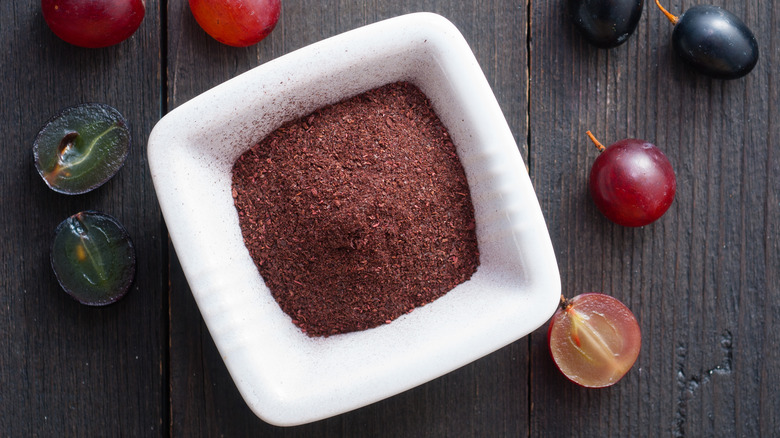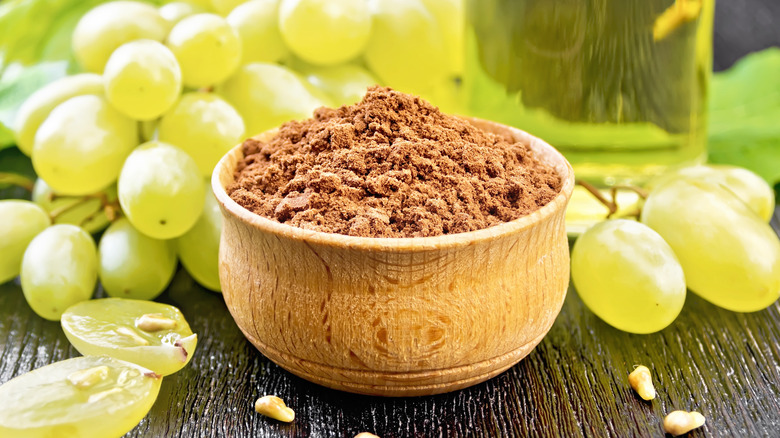Supplement Your Baking Flour With Grape Seed Flour For A Unique Flavor
Chances are that you've come across different types of flour like all-purpose or whole wheat while perusing supermarket aisles. A lesser-known option, however, is grape seed flour. Unusual as it may sound, this funky flour might just become the secret to boosting the flavor of your favorite baked goods. Simply mix a sprinkle with regular baking flour and you'll send taste buds on the gustatory ride of a lifetime.
Firstly, what is grape seed flour? Essentially, it's made from the seeds that are leftover over from winemaking. Although this pomace (seeds, but also skin and pulp) was previously used as compost and animal feed, grape pomace actually has significant culinary potential since it's loaded with fiber, nutrients, and antioxidants. As a result, grape seeds are now being dried and ground — that is, after being pressed to extract any oil — in an effort to produce a flour-like powder that's not just healthy, but delicious.
Grape seed flour is full of flavor. Deeply nuanced, the flour has an intense nuttiness with hints of decadent cocoa. Yet, this richness is balanced by a fruity edge that gives the flour a slightly bitter finish. Evidently, all of these factors can work to add complexity to any baked good that lacks a wow factor. But, there's more. Given its mild grittiness, grape seed flour also imparts a degree of textural variety. Not to mention that it even provides a burst of color when introduced to doughs or batters.
What to remember when working with grape seed flour
While you could scour specialty shops and health food stores, grape seed flour is often available for purchase through online retailers or directly from wine producers. Just don't be surprised if it's pricier — it is, after all, a very niche and labor-intensive product. Likewise, since the flour can be crafted with any number of grape varietals, its color, aroma, and flavor may vary somewhat if the flour is also made with grape skins.
Despite the fact that powdery grape seed flour may look like traditional flour, it doesn't function exactly the same way because it lacks gluten. This is why it's best used in conjunction with traditional baking flour. That said, we recommend incorporating a tablespoon or 2 to every cup of flour to ensure elevated flavors without compromising texture. For additional grape-y goodness, you might even want to consider following a ratio of one part grape seed flour to five parts wheat flour.
Nearly any sweet or savory recipe can benefit from a spoonful of grape seed flour. It can emphasize the fruitiness in berry-based muffins and tarts just as effectively as it can underline the toasty decadence in nutty cookies and chocolatey cakes. In contrast, grape seed flour can also elevate savory bread and herby biscuits, along with adding depth to earthy mushrooms and lentil hand pies. With so many unique ways to use grape seed flour, the sky is the limit.

